Photography may have started as an accidental side-business for William Matlala but the machine operator turned photographer has, in a 35-year career, produced an essential body of work documenting the everyday worker.
Matlala’s exhibition “The Complete Worker: the everyday lives and struggles of blacker workers 1983-2018” opened at the Apartheid Museum at the weekend. It’s a tiny sample of the more half a million images he’s taken since he started bringing a simple camera, a Pallux 100x camera, to the factory he worked in, in 1982.
Inside the circular gallery, exhibition curator, Wits University lecturer and photographer Sally Gaule has created a timeline of the workers movement below corresponding images Matlala made at those times.
“The space is perfect to display William’s work because it’s about the cycle of work and the evolution of the labour movement.
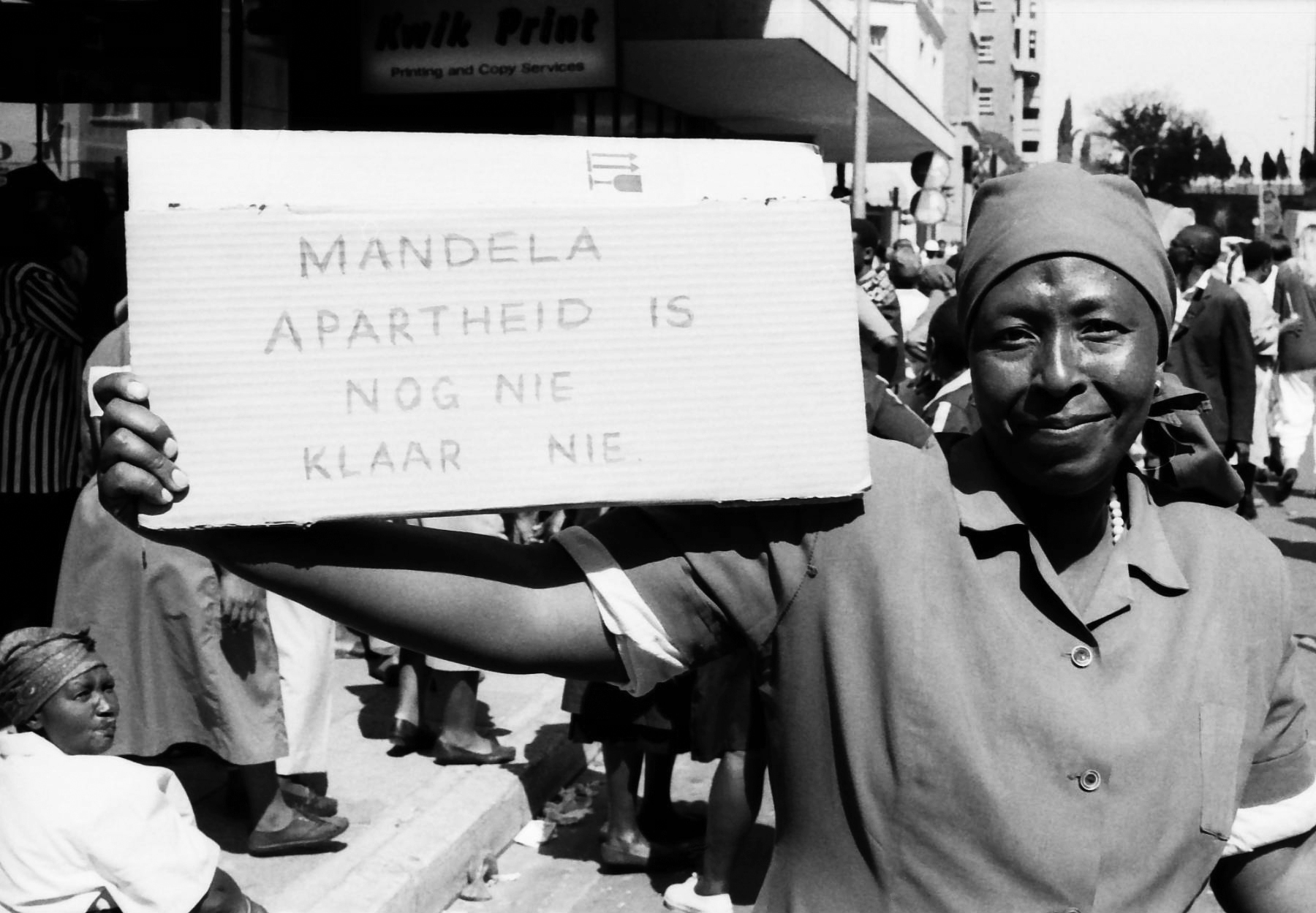
Members of Transport and General Allied Workers Union on strike for wages increase demand march to department of manpower Johannesburg on 13 September 1994 by William Matlala.
“Some of the images are aesthetic, some are not iconic but are more visual record, and some of them come together perfectly with both elements,” says Gaule.
Gaule’s keen eye has picked up sub-themes in the work, including the contrast of sound and quiet; hands as a focal point; and always a powerful sense of humanity.
Gaule says Matlala’s images evoke sound, making the machinery roar from the picture. There’s also sound in the protest marches, the mouths he photographed wide open in full cry. The opposite is present too: the quiet of someone focused on a task or the drudgery of repetition. Hands are maybe an unconscious feature of Matlala’s work but they are ever-present as instruments of menial labour, also fists raised in defiance.
“There’s a casualness and an intimacy he’s been able to capture,” says Gaule of Matlala’s unique insider’s access. This, regardless of whether Matlala’s colleagues are made invisible in the ubiquity of uniforms, or in the moment before they enter the factory gates and can indulge in a moment of flamboyance and frivolity.
There’s an image of Matlala’s colleague arriving at work in a red shirt with floral detail and a clutch bag and court shoes. She’s this person as much as she’s the person who clocks in for a long shift.
In another photo, there are women identically dressed in overcoats and doeks taking a lunch break behind a building. Bits of broken furniture make up the background but Matlala captures the longed-for pause, the connection in gathering and eating together, and the mercy of sun and fresh air before heading back to a factory.
Matlala, 63, still calls himself a street photographer. His humility belies the contribution his work makes as chronicle and reminder of how growing inequality from a structure of economy that exploits masses of workers for the benefit of a few is unsustainable, shameful even.
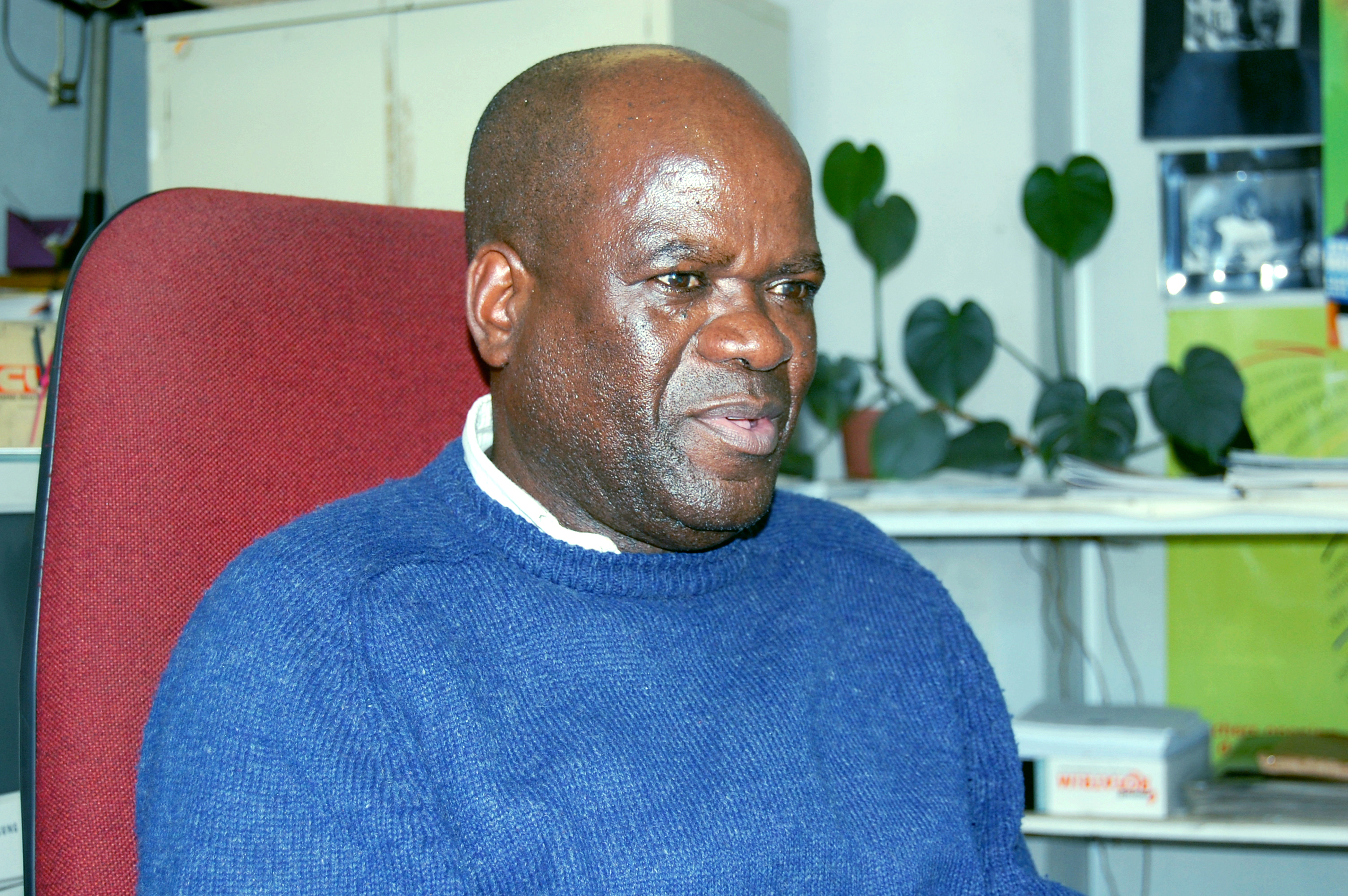
William Matlala in his office in Braamfontein Johannesburg on 22 July 2008 by Vincent Masoga
“People should understand that we are all workers, each one of us is part of a system– even if you are the manager you must answer to the boss and the boss must answer to a bigger boss. When we are gone they will replace us with the next person, and then the next person,” says Matlala.
He tells how as a young man in 1973 he was forced to leave his village of Dithabaneng in Polokwane to find work in Johannesburg, like every other young man before him. His father was a migrant worker working as a miner in Kimberley.
“You were bought up knowing this was what would happen and you were going to be a worker, feeding this system; what could you do?” says Matlala.
One time, on a rare visit home, Matlala’s mother found an old camera that belonged to Matlala’s father. It had been packed away in a suitcase for years. He bought it back with him to the city, and it changed his life.
“I started taking the camera with me to work every day and took pictures of my colleagues,” he says.
His colleagues bought the photos he took and they happily posed for him too. The click-clicking broke the monotony of whirring machines and rushed on the end-of-day siren.
Matlala, who was employed at a Germiston factory that packaged sauce sachets, was falling in love with photography and the precious power of capturing everyday moments on film. He was also becoming more active in the union and started serving as a shop steward.
At that time he also encountered a professional photographer who had fallen on hard time and taken up work at the factory. Matlala no longer remembers his name, but the man encouraged him to take photography courses and he often helped him with tips and adjustment to get a better frame.
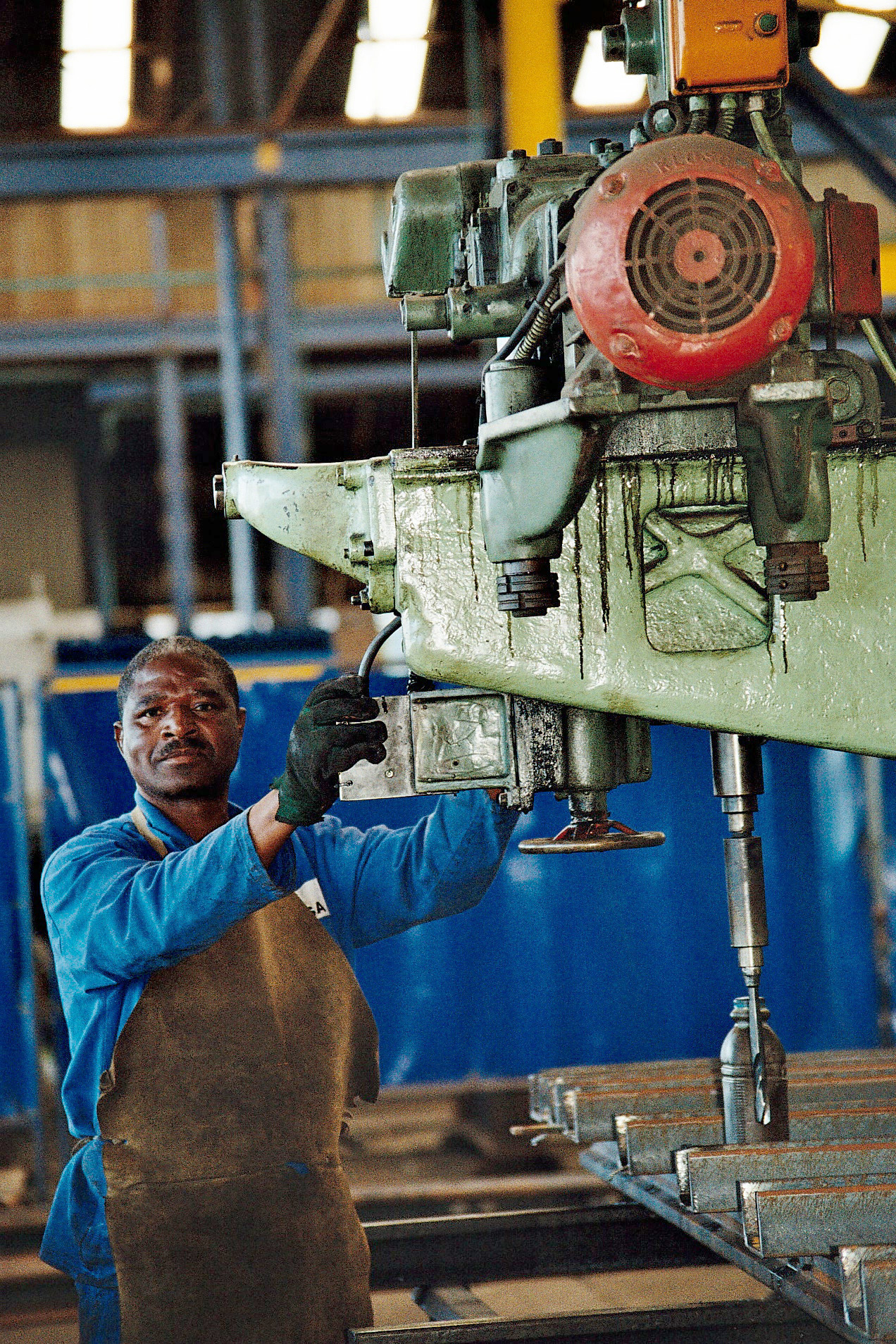
Machine operator at work in Vae Africa steel company in Isando industrial area Jhb on 8 April 2008 by William Matlala.
It stood him in good stead when the factory was liquidated in 1987 he managed to get a job as trade union Cosatu’s official photographer. He was later retrenched from this job too in 1993 but moved on to become an associate photographer for Wits’ SWOP (Society, Work and Development Institute) and for the SA Labour Bulletin. He’s currently also working on digitising his work for Wits’ History Workshop archives.
He’s weathered his share of a tough working life but Matlala says it’s nothing compared to some of things he’s seen more through his lens.
“I have photographed men sleeping in the veld near their factory because they were striking for an extra R1,30, yes a R1,30, pay increase,” he says.
When he talks about a picture of three women on their way to their factory jobs in the 1980s he says it could very well be 2018.
“Sometimes it feels like we have taken two steps forward and one step back for workers, many of them still work for starvation wages. I see more factories closing and even big farms are just small now. Things are getting worse for workers with more tenders, more greed and people who want workers to fight among ourselves so they can keep undermining us,” he says.
At the launch of the exhibition, celebrated veteran photographer Cedric Nunn said of the importance of a public viewing of Matlala’s work: “We have waited too long for this work to be seen,” he said saying Matlala’s work is overdue for recognition and is a crucial way to preserve the visual story of people on the periphery who are fast becoming victims of “modern-day entrepreneurship and rapacious greed”.
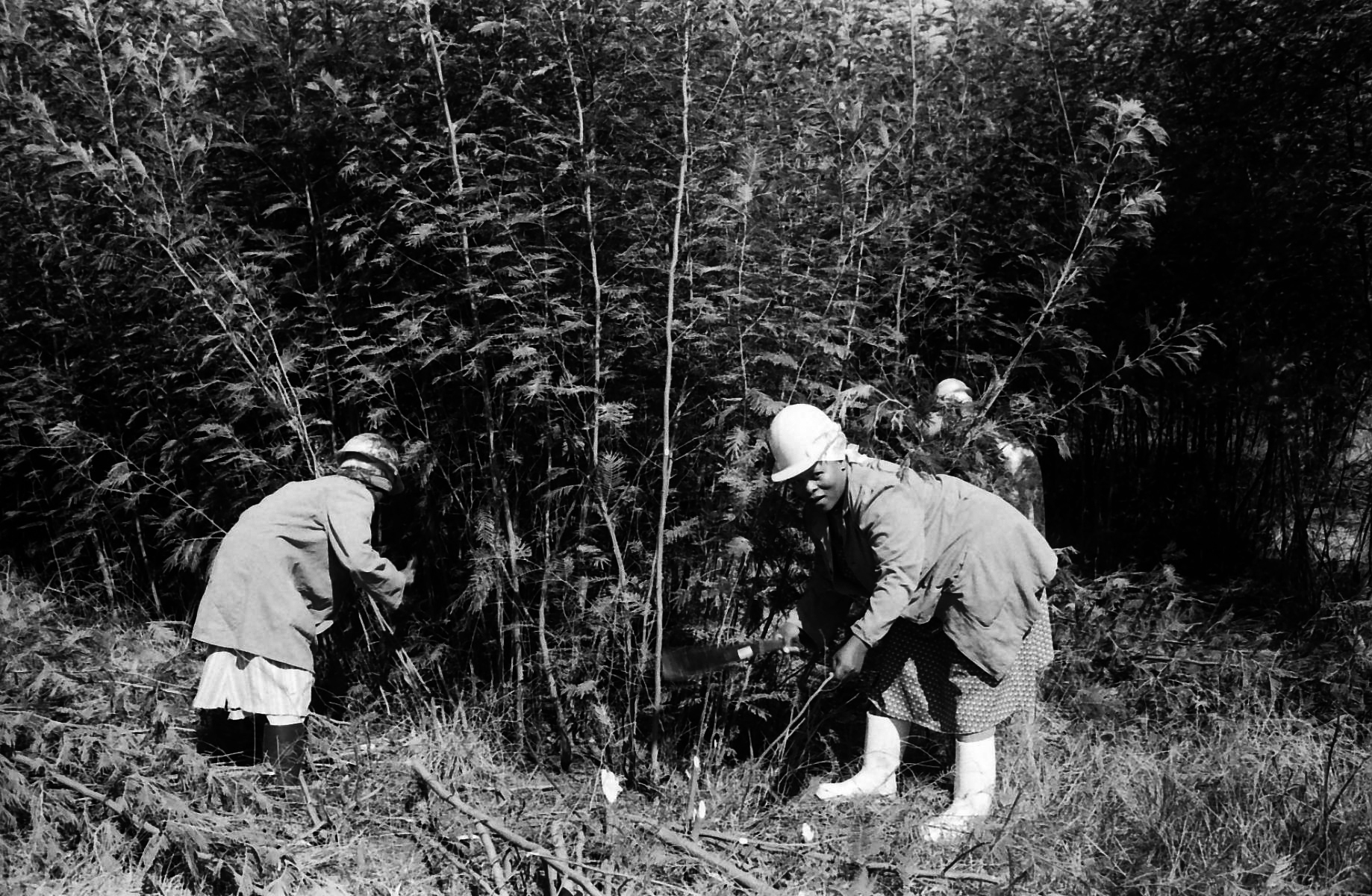
Forestry workers at work in Oshoek forest in Mpumalanga province on 21 April 1998 by William Matlala
For Matlala his pictures are a mirror. As he says: “I hope when people see my pictures they see something of themselves, maybe they also see something they didn’t expect to see.” DM
The exhibition is on at the Apartheid Museum till 20 October









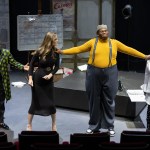








 Become an Insider
Become an Insider